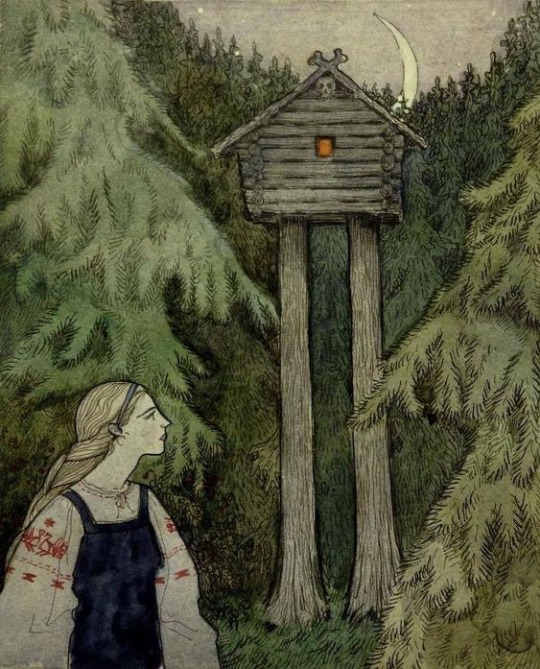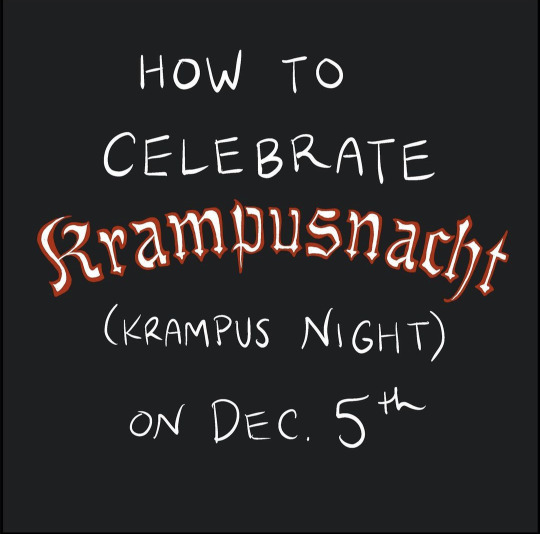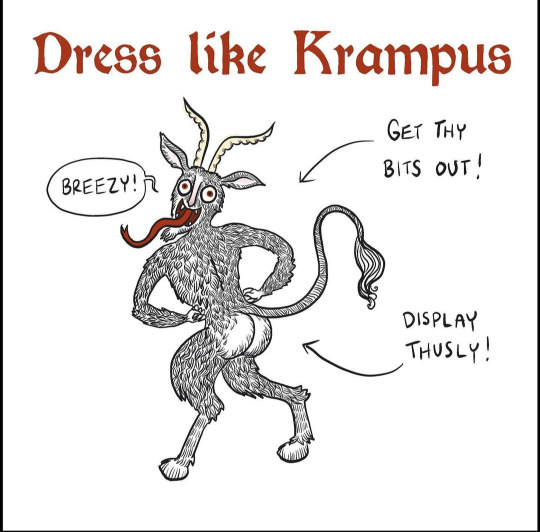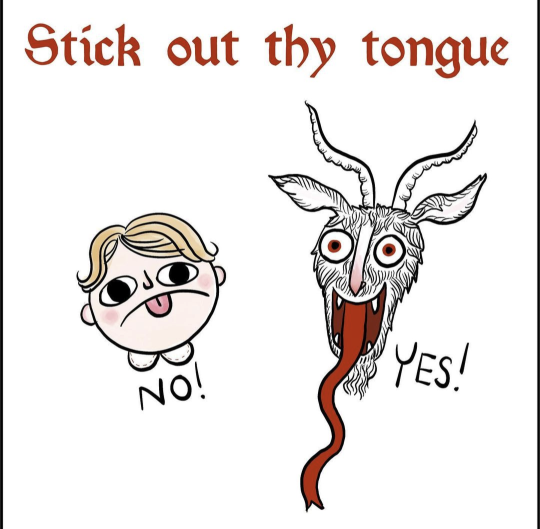#folkways
Text

"It's Christmas!"
425 notes
·
View notes
Text

Symbols of the Ancestors from folk embroidery and weaving, Belarus, drawing by M.S. Katsar.
- Image source - MagPie (aka Olga Stanton)
#ancestors alive!#what is remembered lives#memory & spirit of place#ancient ways#sacred ways#folkways#love#life#traditions#past times#symbols#SymbolSpeak#embroidery#weaving#Belarus#M.S. Katsar#drawing#sewing#stitching
154 notes
·
View notes
Text
i would like to draw the distinction that im not southern in the “yeehaw” kind of way, im southern in the “kooky, dont whistle at night, dont stare too hard into the trees” kind of way
96 notes
·
View notes
Text
“There’s a theory that the British love folk horror because we were the first country to industrialise, so we are most disconnected from our agrarian roots.”
*
“It was my skeleton in the closet that I came from a morris dancing Mecca but, through bonding with the multicultural friends I met in London, I was able to look at my English heritage in a new way. I saw it not as a cul de sac of culture but how it connected to broader customs.”
*
'Though Curry was born in London, both his parents are immigrants. He sees folklore as a way of connecting to the land. “I need to find a way to identify with this place I’m from. It’s also part of a story of environmentalism, the land rights movement and, fundamentally, community. Something Doc feels strongly is that there is no distinction between the Notting Hill Carnival, say, and some intimate local festival you can trace back through the centuries. It’s about people celebrating their here and now.”'
#folklore#british folklore#folkways#folk traditions#folk horror#the observer#the guardian#doc rowe#alice fisher#articles#quotes
23 notes
·
View notes
Text

Vasilisa at Baba Yaga’s Hut
Artwork by Natalia Alexandrova
8 notes
·
View notes
Text






From Haunted Librarian over on Instagram.
13 notes
·
View notes
Text

Harry And Jeanie West - Oh, Hide You In The Blood
9 notes
·
View notes
Note
Just read your head canon for Regency Elvis and I’m absolutely intrigued as to why he’d be from Yorkshire (as someone who was born and bred there). Please, please explain your thinking behind this? (FYI, it’s the greatest county in all of England, but still ;) )
Ooooh my, you’ve fully opened the nerd gates wide with this one, my dear, prepare thyself for an onslaught of nonsensical ramblings. Btw, I it’s beyond neat that you’re native to the coolest county in England. I’m chuffed just to be talking with you.
Opening arguments: stereotypes, that’s what I have to offer, but they’re decent and rather sexy ones so bear with me.
I’ve been fascinated by Yorkshire for much of my reading-life and it started with being an unapologetic fan of the Yorkist Dynasty, then an avid researcher into the notorious Percy family of the north east, a dive into Northumbrian history in general and ultimately latching onto the Brontë lore of the last few centuries. All suggest Yorkshire produces badasss troublemakers of the best sort. I love it. And Elvis fits right in with that.
But two more things.
I once did a rather deep dive into the folkways and immigration patterns of certain areas in Great Britain coming to America and the results were fascinating. Much of British aristocracy, along with Huguenots from France, established our Southern American gentry. Predominately these British aristocrats migrated in the first wave during the Virginia Plantation of the 1600’s and settled the affluent Tidewater regions, as well as the coastal Carolina’s. That left our southern backwoods such as inland Carolina’s, Georgia, Tennessee, Alabama, etc. to be colonized by the second wave that were predominantly hard scrabble, hard working, hard loving commoners from the north of England, Scotland and Ireland.
So, y’all’s north settled our south -or the south as most of us would have known it in the 1800’s, only 1% being aristocratic or owning slaves, living the genteel lifestyle that’s now so typified. So in that way the Presley’s fit into northern England due to roots and culture if not much else.
But lastly, allow me to gush about accents for a moment. Yorkshire accents I once heard a professor say don’t so much have a brogue as they have a drawl. Perhaps the only drawl in all of Britain, and any bit of research proves this with the way y’all elongate your speech and round your sentences compared to the rest of the country. If I had to choose between listening to Sean Bean or Alex Turner talk verses the poshest heartthrob from Surrey -I’d chose the north any day. Y’all have the same gritty, earthy sweetness that a true southern drawl has, and in fact, we owe our drawl to ya.
Please feel free to ask more or add your own insights as this is coming from a southern girl who only ever got to drive through yorkshire while booking it up to Scotland. You’re the expert here.
While we’re at it…here’s a poll for the period drama lovers:
#regency Elvis#period drama#POLL#brontë sisters#jane eyre#Heathcliff#wuthering heights#Yorkshire#elvis fanfiction#interactions#elvis presley#asks#elvis imagine#north and south#elizabeth gaskell#folkways
9 notes
·
View notes
Quote
Most knitting literature is ephemeral, commercial, and popular in its appeal. Victorian books often contained brief historical notes by way of introduction, and a few writers were cultivated as well as well-read ladies, who brought a certain critical aplomb to their essays in history, but they all included legends and romantic details which appealed to the commercial instict for advertising. Thus, some pleasant fictions about knitting history have gained wide currency and led to widespread belief in the high antiquity of knitted textiles, whose patterns are thought to have emerged in a mysterious religious past. Stories about Fair Isle patterns being derived from sailors shipwrecked during the sixteenth-century Armada expedition, and of pre-Celtic origins for ‘Aran’ designs typify the stories and help to sell wool. Miss McGregor, in an earlier book (The Complete Book of Traditional Fair Isle Knitting, Batsford, 1981), has shown that the true story of Fair Isle knitting is not so romantic. It is more complex and more fascinating. The making of textiles is an art of life spurred by necessity, and improved by manual skills, just like any other craft. In any culture religious and aesthetic considerations naturally merge in the mind of the craftsman, and simple primitive designs acquire religious names: religion springs from life, not life from religion.
The Bishop of Leicester, in The Complete Book of Traditional Scandinavian Knitting by Sheila McGregor
167 notes
·
View notes
Text
Gordon Bok joins the Smithsonian Folkways!
I am simply beoynd excited to hear that Gordon Boks solo catalouge has been offered to - and accepted by - Smithsonian Folkways as part of their vast musical heriatge that they preserve and currate. It seems this is part of a slightly larger deal for Timberhead Music, who has had care of the albums, to release all its contents to the Smithsonian.
Much of Boks early works are already preserved by this fine institution. The albums he produced as part of a trio with Ann Mayo Muir and Ed Trickett were all released by Folk-Legacy Records, for which the trio was their flagship artists and most famous contributers. The labels 140-record catalouge joined the Smithsonian in 2019.
Boks managment happily write about how this transfer of ownership will allow all his albums, many of whom they have let go out of print, be available both digitally and physically. It will also see much of his catalouge return to streaming services. No set date has been made for this yet, as it depends on the time smithsonian Folkways need in order to proccess the transfer and sort the material.
However, already now you can listen and buy tracks pr albums from the Smithsonian Folkways website. I just bought a track I have much missed since it disappeared from streaming, "Karl Edstrom and the Hester" from his 1991 album "Schooners". Each individual track price at $1.49.
3 notes
·
View notes
Text

Happy Krampusnacht, kids! Hope you've all been good!
#mari lwyd#costume#marilwyd#traditions#peace out#horse skull#folklore#folkways#holidays#winter#weird for the sake of being weird#krampusnacht#gruss vom mari#i am not horning in on his racket
21 notes
·
View notes
Text

Ancient Ballachulish Goddess from Scotland.
Ballachulish is a small seaside village in the Scottish Highlands where this figure known as the Ballachulish Goddess was found. She is now in the National Museum in Edinburgh.
She is a figure carved from a single alder tree with stones for eyes and was dug up from the peat in Ballachulish and found with a stand of woven branches like the ones behind her. She may have been the Cailleach as this mountain was near where she stood looking out to the straits of Loch Linnhe.
#ballachulishgoddess#ancestors alive!#what is remembered lives#memory & spirit of place#ancient ways#sacred ways#folkways#Cailleach#goddess#scotland#highlands#alder tree#carving#Loch Linnhe
42 notes
·
View notes
Text
"Russians adore raspberries. Many either collect them in the forest or grow them in their gardens. Russians use raspberries in a multitude of recipes, including wines, jams & jellies. During the winter months, raspberry preserves serve as a primary remedy for treating colds and flu as well as for relieving high fevers. Russian children sometimes feign symptoms of illness in order to get a spoonful of delicious raspberry jelly from their parents.
Raspberry is mentioned in numerous Russian songs and poems as a sign of something sweet, attractive, and useful and as a symbol of the traditional Russian lifestyle so often cited in stories about Russian folkways."
- A Russian Herbal: Traditional Remedies for Health and Healing by Igor Vilevich Zevin

#russian folklore#raspberries#folkways#folk magic#russian folk belief#folk herbalism#folk healing#russian culture#holy queue#kitchen witchery#russian folkways#russian folk music#russian literature#slavic folkways#bookcase#slavic folklore#home remedies#folklore#animism
18 notes
·
View notes
Video
youtube
Martin Carthy - Byker Hill
3 notes
·
View notes
Text

Clove (caryophyllus aromaticus)
Folk Names: Mykhet,
Thursdays are the best day for using clove in magical spells (or any time or date associated with Jupiter).
Clove burned as an incense attracts riches, drives away negative forces and hostility, can raise the spiritual vibrations and purify the area. Cloves are a great natural purifier that can provide a great energy in our living spaces.
Since cloves are shaped like a nail, they are often seen as protective. They have the power to aid in protection and exorcism. Burn a clove to stop others from gossiping about you.
String cloves on a red thread using a needle to make a necklace. Wear for protection or give to a baby as a protective device (hang where they will not be able to touch it).
When worn or carried, clove can strengthen the memory and bring comfort to the bereaved. Add cloves to sachets or charm bags to attract friendship or love.
Healing Properties: Antioxidant, promotes better liver function, reduces ulcers.
Cloves are also historically linked to healing and protection from illness. Clove oil has been used for centuries to treat a variety of ailments, especially dental ailments and is naturally an antiseptic. They are also a mild anesthetic (due to it containing eugenol), which makes it great for treating toothaches.
Cloves can be used to ease nausea, vomiting, and gas.
~ Source: Between the Realms
Photo: Pixel Stories
Stocksy.com/829132
#Clove#cloves#Between the Realms#caryophyllus aromaticus#Mykhet#Carenfil#ancient ways#sacred ways#herbal & plant wise ways#clove oil#healing#folkways
3 notes
·
View notes
Text


“The First Time Ever I Saw Your Face,” originally written for Peggy Seeger by Ewan MacColl in 1957, is considered one of the greatest love ballads of the twentieth century.
In 1962, Peggy released a recording of the song on her and Ewan’s Folkways LP The New Briton Gazette, Vol. 2. It has been recorded by a number of artists over the years including Roberta Flack, whose version became a breakout international hit in 1972, winning Grammy Awards for Record of the Year and Song of the Year.
Peggy has recorded the song multiple times throughout her career, with a 1983 version appearing on her album Folkways Years: 1955-1992: Songs of Love and Politics. Her most recent rendition was released last year, prompting her to reflect:
“I’ve had two life partners, one male and one female, and I have three children and nine grandchildren. I’ve come to realise that the lyrics can be interpreted in so many ways. Ewan wrote the tune to mimic the heartbeat of someone wildly in love and I used to feel like a soaring bird when I sang this song. Now I’m grounded within it and that makes me happy.”
Learn more: s.si.edu/3UCFMiP
Photo of Peggy Seeger courtesy of the Ralph Rinzler Folklife Archives and Collections, Smithsonian Institution
2 notes
·
View notes